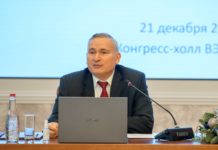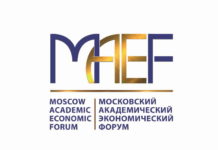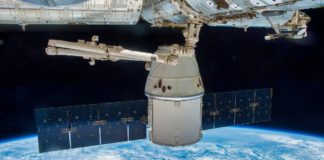We have entered a period of acute phase of transition to a new world order. These new conditions require clarification of strategic guidelines for our country and the formation of a new model of its economic development based on them.
Based on materials from MAEF-2023

Experts:
Sergey Dmitrievich Bodrunov,
co-chairman of the MAEF, president of the VEO of Russia, president of the International Union of Economists (IUE), corresponding member of RAS
Valery Anatolyevich Kryukov,
Director of the Institute of Economics and Organization of Industrial Production of the Siberian Branch of the Russian Academy of Sciences (RAS), member of the Presidium of the VEO of Russia, member of the Presidium of the International Union of Economists (IUE), academician of RAS
Wang Wen,
Director of the Chongyang Institute of Financial Studies of the People’s University of China, co-chairman of the Expert Business Council of the VEO of Russia and IUE on the development of Russian-Chinese cooperation, expert of the Valdai Club
The task of a technologically and economically independent national system

Bodrunov: We proceed from the fact that the goal and value of the development of any society, any economic system is a person living in harmony with himself and nature. This humanistic, but at the same time objectively necessary for the survival of society, idea permeates our Constitution. Its formulation, however, is as true as it is abstract. We have specified it both in our works and at our congresses in the framework of previous forums, showing that the long-term perspective of the development of society is a movement towards a new industrial society, substantiating the conclusion about the inevitable objectively determined gradual transition of civilizational development to a new way of meeting needs, on a material basis which lies smart atomized and intellectualized industrial production, to public spaces in which the development of a creative, cultural, non-economic person occurs, figuratively speaking, to the world of noo, not zoo.
At the same time, we understand that the contradictions of modern civilization are deep, the old world is unyielding, strives not to lose its current positions, and where possible — to take revenge, but such a world in today’s practice is a world of aggression, sanctions, intense struggle in any, even sometimes unacceptable, varieties . It stands at our borders and rules the roost in many other centers of political and economic interests. We have entered a period of acute phase of transition to a new world order. These new conditions require clarification of strategic guidelines for our country and the formation of a new model of its economic development based on them. The last year has shown that humanism must be able to both defend itself and attack, and that a powerless, stable, highly independent economic and political system for the development of man and society within the framework of its traditional eternal humanistic values will be under threat.
What does this mean for us? Our country faces the challenge of a technologically and economically independent national system, which at the same time provides both current social guarantees and adherence to promising global civilizational trends. Let me emphasize an important point: independence does not mean autarky. I say this and have said it repeatedly. It is necessary, to the extent and where possible, to develop international technological cooperation and partnerships, industrial cooperation, to take the best, to join forces, but also to build up our own industrial potential as part of the reindustrialization of the economy on a qualitatively new basis, replacing technological damage from the departure of former partners and ahead of competitors for through the development of the most advanced areas of the industry.
However, independence of technology and import independence of the economy cannot be achieved only by solving the important, but still situational task of simple import substitution. The main solution to the problem — achieving technological sovereignty — can and should be ensured only by reaching a level of development when the outside world will be dependent on one or another of our domestic technologies and developed economic institutions. And such guidelines must be set. They are achievable.
In Russia we have experience of similar breakthroughs in space, aviation, nuclear energy, chemistry, physical disciplines and technologies, etc. There are considerable advances, including in academic institutions, that need to be preserved and advancedly developed. A decisive turn is needed to strengthen the role of science; only science will ensure the technological sovereignty of the country. The possibility of a technological and, accordingly, economic breakthrough is also evidenced by the experience of China, which has made a giant leap in technological development over the past 30 years and has called into question the technological leadership of Western companies in telecommunications, in the creation of multifunctional transport and logistics systems, and in many other technological counterpoints and areas economic development.
Determining the role and place of Russia in the new world order is a task of extreme importance.
As they say today, and this is indeed true, it is existential task. Its solution largely depends on the accuracy of identifying the true trends in the development of civilization, not only in the coming years, but in the future for decades or more. A powerful transformation of society is underway. These questions need to be explored in detail and deeply. In world social science, this is now given enormous importance. The academic community of Russia has something to answer to this challenge, perhaps the main one for all of us, Russians, but this is a systemic, synthetic, complex task; it cannot be solved without a certain coordination of the work of the Academy’s structures in this area and, without exaggeration, scientists outside to the Academy, who can work under its methodological guidance.
In this regard, the VEO of Russia proposes to create a special scientific council within the structure of the Russian Academy of Sciences under the Presidium of the Academy, on the problems of modern transformation of society giving it the authority to consolidate research in this area. Considering the extreme importance of this area and limited resources given, the VEO of Russia could quickly take over full organizational and financial support for the activities of such a council. Cooperation between the Russian Academy of Sciences and the VEO of Russia throughout our long common history has always been close and has yielded many positive results. It seems that joint work on this project could also be effective and important for society in connection with the upcoming 300th anniversary of the Academy, since it will help determine the main positions in strategizing the country’s development. After all, only a verified, scientifically based development strategy, understood and supported by society, will allow Russia to take its rightful place in the new world.
Development of Asian Russia: problems, factors, scenarios

Kryukov: The Asian part of Russia is a huge part of both the Russian and world economies in terms of mineral reserves, biodiversity and scientific and educational potential. But what is happening to Asian Russia? The population is declining and the labor force is declining, fixed assets are aging, gross value added is rapidly decreasing. The highest population density is in the south of the region, urbanization is concentrated there as well as local industrial development. As a rule, these are centers that go back to the technological structure associated with industrialization, that is, with the classical structure of the economy, which precedes what we talk a lot about and what we dream about in our various analyses and proposals. Road density and market potential in terms of population density and presence of economic agents are low. Small and medium-sized businesses are developing rapidly especially in the service sector, but, unfortunately, their share is clearly insufficient in high-tech industries.
And here we have a problem of spatial imbalance. To some extent, it exists in European territory, but for Asian Russia, in connection with large geopolitical projects that are being implemented in the Arctic or at the local level in individual very remote centers of economic activity, that gap arises and intensifies. I would call it the fragmentation of the space of Asian Russia between the scientific and industrial potential of the south and what is being realized in the north and in the middle zone. The scientific-industrial and production-technical potential of the central and especially southern zone of Asian Russia is very weakly involved in the implementation of these projects. This applies to NSR, LNG projects and projects related to the development of many types of minerals.
This problem formed the basis of a major scientific project which was supported by the Academy of Sciences. We have completed the work, and the conclusions and considerations that I will present are based on this work. For its implementation a consortium was created, in which our institute became the coordinator. I thank all its participants, especially the Institute of National Economic Forecasting, Siberian Federal University, Institute of Catalysis and Siberian Research Institute of Geology, Geophysics and Mineral Raw Materials.
The goal of the project is to create methodological, technical and information bases for the development as well as justification of development directions. We have got the liberty, with the help of modern information technology, to work with this reality and try to offer a solution. We have developed spatial policy principles. This project is different from others in sense that it is based on synergy and interaction within spatially distributed chains of creation not of value, but of social value, that is, those economic multipliers, but these multipliers must be project-based, connected with the space in the east of Russia and serve as a framework for the implementation of further technological structures.
The ideological core of the approach is the synergy within the value chains of various components that are either being realized or have the potential to be realized. It seems to us that only on the basis not of local or industry projects, but of such synergistically connected and complementary chains is it possible to realize the goals that our respected colleagues spoke about. I agree with the view that there needs to be a focus on increasing the complexity of our economy. This is largely due to foreign economic and foreign policy circumstances. Increasing complexity should be a public policy goal. We need not just GDP growth, we need a materially determined structural characteristic of the indicators that stand behind these metrics. It is necessary to build up programs to support a complex industrial economy, closing the missing elements. Additional difficulties arise in the formation of vertically integrated chains. Unfortunately, those chains and their prototypes that were in the Soviet economy have largely either exhausted themselves or have been greatly shortened. All this presupposes the formation of new approaches to the indicative planning system.
We analyzed the dynamics and opportunities that can be realized in Asian Russia within the framework of traditional areas — metallurgy, the coal industry, everything related to hydrocarbons. Their potential is far from being exhausted. The experience of Canada, Norway, and Australia clearly shows this. Unfortunately, we are implementing a model in which the most high-tech, most significant components and equipment are 2/3 imported. In value terms, they make up only 10%, but from the point of view of economic returns and the impact on the final result of the activities of resource companies and projects implemented in the east, this is all 90% which means a huge imbalance. On the one hand, we are talking about localizing 60% of the oil industry, and on the other, 10% of imports provide the main result and the main economic efficiency.
We have developed a set of scenarios for the relationship of target indicators for Asian Russia. We created a modern database that works with a large number of projects, and developed a basic, pessimistic and moderately optimistic scenario. Clearly, the latter shows the most acceptable results.
What do our calculations show? If we take the knowledge base and database of all projects that are mentioned in the media, we get growth rates of at least 3%, that is, Asian Russia cannot serve as a trigger, a catalyst for economic development. What does this mean? Horizontal interaction and deepening, expansion of relationships are necessary, that is, supplementing the project component with developments that can be obtained on the basis of modern technologies, creating a knowledge base on 70 thousand investment projects. A huge amount of work has been done. Now we are developing it with our colleagues from the Ural Branch of the Russian Academy of Sciences, that is, we are trying to understand how to expand our understanding of the opportunities that open up the potential of the territory.
Based on knowledge and understanding of the interaction of chains, projects should be assembled and formed. What conclusions does this lead to? They would seem obvious. We need fundamentally different solutions from those that have been implemented. For example, we need not one railway line, but a network, tree-like structure of the railway and transport network, which is the basis of economic interactions over a vast territory and without which it is impossible to implement those interactions, those horizontal connections that we offer.
And most importantly, we present to your attention a modern approach based on information technology for a deep understanding of industries and the interaction of various economic entities over vast areas with an awareness of their role and place in the Russian economy.
The economic future of China and Russian-Chinese cooperation

Wang Wen: For many years, the international community has not welcomed the development of Chinese-Russian cooperation. In recent years, the United States has launched a trade war against China, is trying to block China’s access to modern technology, and is seeking to separate its economy from China’s. The Ukrainian crisis of 2022 led to more than 10 thousand sanctions being imposed against Russia. These new factors have added uncertainty to Sino-Russian cooperation. However, evidence shows that bilateral trade between China and Russia has grown rapidly in recent years, shattering the imposed notions of Sino-Russian cooperation.
In 2015, total trade between China and Russia was $68 billion, rising to $107 billion in 2018, approximately $147 billion in 2021, and nearly $195 billion in 2022. Over the past seven years, the average growth rate has exceeded 20%. In the first four months of 2023, trade between China and Russia reached US$73 billion, up 41% year-on-year. If this trend continues, the goal set by the leaders of China and Russia of $200 billion in trade turnover between the countries in 2024 will be achieved ahead of schedule and trade turnover may even reach $250 billion.
As you know, the Western world has imposed more than ten packages of sanctions against Russia, a total of more than ten thousand sanctions, in an attempt to defeat Russia. However, they underestimated the country’s political, social and economic stability and its ability to withstand pressure. The West underestimated the collective cohesion and strategic will of the Russian people. The Russian economy not only did not collapse, but also shows an inflation rate even lower than in other European countries.
The ruble turned out to be the strongest currency in the world in 2022. In the global ranking of total GDP in 2022, Russia rose from 12th to 8th place. All this fully proves its stability. While pursuing a policy of hard blocking Russia, some countries are also making attempts to soft block China. We see restrictions on Chinese companies’ investment abroad, abuse of export control rules, pressure on Chinese high-tech companies, etc. Such attempts to block China’s progress have failed to limit the country’s technological development. For example, China is the world leader in 5G technology, the launch of the new C919 airliner broke the monopoly of European and American Airbus, and Chinese microchip manufacturers were able to launch a revolutionary 14 nm process.
External pressure from the West on China and Russia is forcing these two countries to rapidly move towards deepening and expanding comprehensive cooperation. Sino-Russian cooperation is promoted not only by external circumstances, but also by internal factors at three levels.
First, at the strategic level, the leaders of China and Russia have a high degree of mutual trust. China has held the largest number of bilateral meetings at the highest level with Russia. Over the past ten years, the leaders of the two countries have met more than 40 times. The joint statement signed by the two sides in March this year further demonstrated the commitment of the leaders of China and Russia to practical cooperation.
Second, at the economic level, China and Russia complement each other. From energy and agriculture to highly skilled workers and infrastructure, China and Russia have their own strengths. Deepening comprehensive economic and trade cooperation between China and Russia is actually a matter of seeking mutual complementarity, in which countries learn from each other’s strengths and compensate for weaknesses.
Third, at the public level, China and Russia have a social basis for deepening comprehensive cooperation even in everyday life. Until recently, the Chinese’s knowledge of Russia was limited to modern Russian literature and art, for example, they were familiar with Gorky and “Moscow Nights.” In recent years, kvass, Russian ice cream and Russian stores on Chinese e-commerce platforms have rapidly become popular in China, where there is no end to buyers.
President Putin is the most famous foreign leader with the largest following in China. In Russia there is also an increase in sympathy for the Chinese. It can be seen that external factors, such as pressure from European and American countries, and internal factors of a political, economic and social nature in both countries have their influence. Chinese-Russian cooperation does not and will not have any upper limit to its development.
The “theory of reaching a peak in Russian-Chinese trade”, widespread in Western media, is doomed to bankruptcy. Of course, unrestricted trade between China and Russia does not mean that trade cannot be optimized.
Next, I would like to make some suggestions to optimize five aspects of trade: trade structure, energy cooperation, agricultural cooperation, investment financing and infrastructure projects.
One such aspect is the structural optimization of Chinese-Russian bilateral trade. In addition to the fact that China and Russia should steadily increase their overall trade volume, they should also strive for structural optimization and look for potential opportunities for it. China has been Russia’s largest trading partner for 13 years in a row. The bulk of exports from Russia to China are energy resources; in 2022 they accounted for 75% of all exports. Obviously, the excess share of energy resources does not make the trade structure between the two countries diversified.
From January to April 2023, exports from China to Russia amounted to US$33.6 billion, representing a 67% year-on-year increase. According to the latest data, in April China exported goods worth US$9.6 billion to Russia and imported US$9.6 billion from Russia. Export to Russia of Chinese cars, smartphones, household and construction equipment, etc. has increased significantly, and bilateral trade has become more balanced and diversified. In 2022, Chinese exports of high-tech products to Russia grew by 51%, and automobiles and spare parts by 45%.
Remarkably, in the first quarter of 2023, Russia became the largest overseas market for Chinese car exports. However, the total share of Sino-Russian trade is still relatively small. In 2022, trade between China and Russia accounted for only 3% of China’s total foreign trade, less than the total trade between China and Malaysia, China and Vietnam, and only about a quarter of trade between China and the United States. Russia is only China’s tenth largest trading partner.
Nevertheless, I am confident in the prospects for Chinese-Russian trade. If current growth rates continue, Russia will overtake South Korea in 2030 and become one of China’s three largest trading partners. In this regard, China and Russia should seize this opportunity and turn a short-term initiative to solve short-term problems into a long-term program of deep mutually beneficial cooperation.
Secondly, China and Russia should strive for a breakthrough in energy cooperation. They should steadily develop cooperation in the field of traditional energy and at the same time strive for breakthroughs in its methods and expand the prospects for cooperation in the field of green energy.
China is the largest energy consuming country in the world, and Russia has the richest natural resources and energy reserves in the world. China should become the largest buyer of Russian energy resources. In February 2023, Russia overtook Saudi Arabia to become China’s largest oil importer, a trend that is expected to continue.
Regarding cooperation in the field of natural gas, China and Russia have opportunities for development in this matter as well. In 2022, China’s LNG import volumes from Russia are still lower than those from Australia, Qatar and Malaysia, accounting for only 10% of total LNG imports. Imports of natural gas via pipelines are also lower than imports from Turkmenistan, amounting to only 25%. With the modernization of existing pipelines and the construction of new lines, natural gas imports to China via pipelines from Russia should increase from the current 15 billion cubic meters to about 25 billion cubic meters per year in the next few years.
While maintaining the steady development of cooperation in the field of traditional energy, China and Russia should also seek and explore new models of partnership: for example, in the field of natural gas, both countries should explore opportunities for expanding cooperation under the China-Russia + third party scheme. In the future, they can continue to exchange and collaborate on technologies such as energy conservation, energy efficiency, carbon capture and recovery.
Third, China and Russia should strive to develop cooperation in the field of agriculture. To optimize the business environment, countries should establish channels for investment cooperation in related areas. From 2010 to 2020, agricultural trade volume between China and Russia increased from US$617 million to US$5.55 billion, with an average annual growth rate of more than 10%. In 2022, trade in agricultural products between the two countries increased by 43%, and exports from Russia to China increased to $7 billion. But this is clearly not the limit of Chinese-Russian cooperation in the field of agriculture.
Every year, China imports about 110 million tons of grain, of which only about 1 million tons are imported from Russia, which is less than 1%. Russia accounts for only 1% of China’s total soybean imports. The population in China is 10 times larger than in Russia, while the area of arable land in Russia even exceeds that in China. The high degree of complementarity in agricultural development between the two countries has not yet been fully reflected.
Cooperation between China and Russia in the field of agriculture is not only an aspect of overall trade and economic cooperation, but also a factor in food security, which can help both sides reduce dependence on Western food supplies. China and Russia should explore and formulate an agricultural cooperation strategy, resolve differences in approaches, jointly create a favorable business environment for agricultural cooperation, and resolve a number of issues and problems such as high investment prices lawsuit for Chinese agricultural enterprises in Russia, difficulties in moving labor to Russia, differences in standards for importing and exporting agricultural products and political barriers.
Fourth, China and Russia should promote harmonized rules on finance and investment. Both countries should establish independent financial institutions, continue to promote settlements in their own currencies, and pragmatically increase mutual direct investment. The local currency settlement ratio for trade between the two countries has risen rapidly, exceeding 45% in 2022, but mutual investment between the countries is low. China’s annual non-financial direct investment in Russia is no more than $1 billion, which is less than 1% of China’s foreign investment. Russia’s direct investment in China totals more than $10 million, that is, less than 0.1% of China’s foreign investment.
Sino-Russian financial and investment cooperation must keep pace with the pace of bilateral political, economic and trade cooperation. Creating a Sino-Russian financial ecosystem and promoting the creation of independent Sino-Russian financial institutions can help the two countries overcome the risks and restrictions associated with European and American financial sanctions.
Fifth, China and Russia should complement each other in infrastructure construction. Both countries should increase investment in infrastructure, especially to improve communications in surrounding areas. In 2022, the first Chinese-Russian road bridge across the Heilongjiang border river was opened, connecting the cities of Heihe and Blagoveshchensk. The construction of the Tongjiang Railway Bridge, the first cross-border railway bridge between the two countries, was completed and put into operation in 2023.
I assessed the situation in 21 Russian cities and saw that Russian infrastructure is developing relatively slowly. There is great potential for the construction of high-speed railways, expressways and networks. China is “obsessed” with infrastructure projects; the country can actively participate in filling the Russian market, adapt a number of its infrastructure projects, contribute to the rapid development of Russia and help implement the comprehensive integration of the transport systems of the two countries.
One of the important issues in the railway industry is the need to build a fourth Sino-Russian railway between the Chinese region of Xinjiang and the Russian border region of Altai, given that the capacity of the two railway junctions of Khorgos and Alashankou in Xinjiang is almost exhausted. We need a highway that directly connects the western regions of China and the central regions of Russia without crossing the borders of third countries.
In addition, there are still many opportunities for cooperation between China and Russia in the fields of high technology, exchange of skilled professionals, education, digital economy, local cooperation and cultural exchanges. I will not touch on these aspects here due to lack of time.
Summarizing what has been said, I would like to note once again that Chinese-Russian cooperation is a long and wide road that will become wider and longer.
China and Russia should take advantage of the opportunities that the new situation brings, actively guide and stimulate the explosive growth of cooperation, and make it full-scale. At the same time, we should analyze and correct the shortcomings of the past in Sino-Russian relations associated with active contacts at the highest level against the backdrop of weak activity at the grassroots level, as well as a strong political component with a weak economic one. In addition, formalism in cooperation, as well as non-fulfillment of previously concluded agreements, should be eliminated.
In the future, Sino-Russian cooperation should pay special attention to such aspects as pragmatism, timeliness and bringing projects to actual implementation. In addition, when implementing specific projects, it must also work ahead of the situation. At the same time, such cooperation should actively shape public opinion, strengthen comprehensive communication and mutual trust between the two sides. Chinese companies and society are gradually discovering Russia’s development potential, and China’s vast market is opening its arms to Russia.






